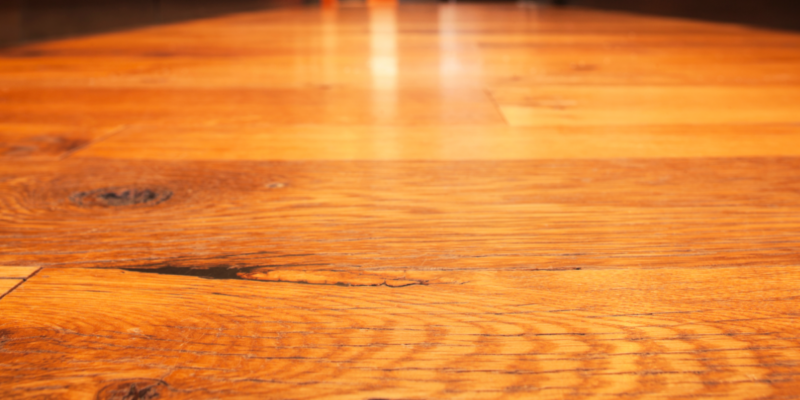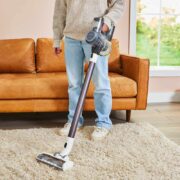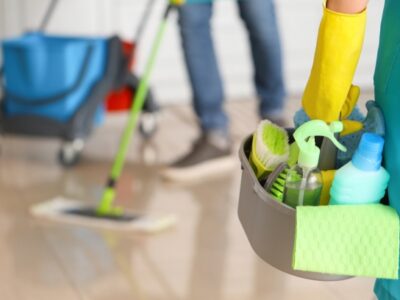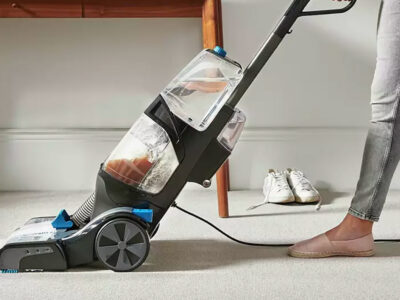Timber floors are used all over the world in residential and commercial construction. This natural material looks incredible, and with the right timber floor cleaner your home will look fantastic for decades to come.
Cleaning timber isn’t quite as simple as maintaining alternatives like tile or carpet. As a living material, timber needs a little extra attention to ensure it’s clean, stain-free and that the finish is protected. With the right products and techniques, timber floors can look perfect for decades. With the wrong products, timber flooring can become stained, dull, dry, and it may even begin to crack.
To help point you in the right direction, we’re going to go over how you can keep your timber floors clean, and some special tips for lifting those tough stains.
What Timber Floor Cleaning Products Should I Use?
Timber is a living and breathing material. That means it looks fantastic – especially as it ages and develops character. However, timber looks good due to the moisture and natural oils it contains, so it’s important to use cleaning products that won’t affect the finish.
When cleaning wooden floors, you should always use soaps that are designed for timber. These products are formulated to clean and lift dirt without stripping natural oils, which can cause the timber to dry out and become cracked over time.
If you can’t get ahold of dedicated timber floor cleaning soaps, you can use mild products such as dish detergent or white vinegar. These household cleaners are an effective way to clean timber without stripping too much natural oil from the surface.
How Often Should I Clean Timber Floors?
Timber is a relatively soft material. That makes it prone to scratches, dents and other defects. These can all be caused by normal use, especially if the floor is dirty. For best results, timber floors should be cleaned with a dry mop every week, and then mopped with soap and warm water every 2-4 weeks.
The combination of these two cleaning techniques removes dust, dirt and grit without oversaturating the wood or stripping its natural oils.
If you have hardwood timber flooring then we recommend investing in a spray mop. Spray mops use microfibre cleaning pads and small amounts of cleaning solution to remove dirt without applying an excessive amount of water. This is the ideal way to clean timber without damaging the finish.
How to Clean Timber Floors
Cleaning timber floors is a relatively simple process. To keep your floors looking spick and span you should:
- Dust the floor with a dry mop – Go around the house once per week with a dry, microfibre mop. This will remove dust, dirt, pet hair and other small particles from the floor. The mop pad should be washed between uses – never use a mop pad that’s already dirty or gritty, as this can scratch the timber’s finish.
- Vacuum dirt and grit – If your floors are especially dirty then you will need to vacuum them instead of using a dry mop. This picks up dirt, sand and other types of grit that may scratch the surface. Before vacuuming, make sure the vacuum is fitted with a cleaning head that’s designed for smooth floors. Regularly check the vacuum head to make sure the bristles are intact to avoid scratching the timber.
- Clean dirt and grease with a wet mop – Use a damp mop, warm water and timber floor soap to clean your floors every 2-4 weeks. This is the best way to lift dirt and grease that has worked its way down into the timber grain. Avoid using an excessive amount of water, as this can soak into the timber and cause the surface to swell or stain. It’s also a good idea to use a towel to dry up any excess moisture as you go.
How to Remove Stains from Timber
Getting food, drink, grease, oil and pet stains out of timber can be a challenge. As a porous material, liquids can soak into the surface and may be difficult to remove with soap alone.
The best way to remove stains from timber is to use a dedicated stain removal product. These are designed to penetrate the timber’s fibres and lift stubborn and acidic stains (such as red wine, pet urine and grease). Be aware that stain removers may strip natural oils from the timber, so you will need to follow the manufacturer’s directions for oiling or refinishing the wood once the stain is removed.
For extremely stubborn stains you may need to lightly sand and refinish the floor. This should be considered a last resort, and it’s worth hiring a professional if you do come across a stain that you can’t remove on your own. Professional floor cleaning can get rid of any marks or stains without damaging the finish.










Comments